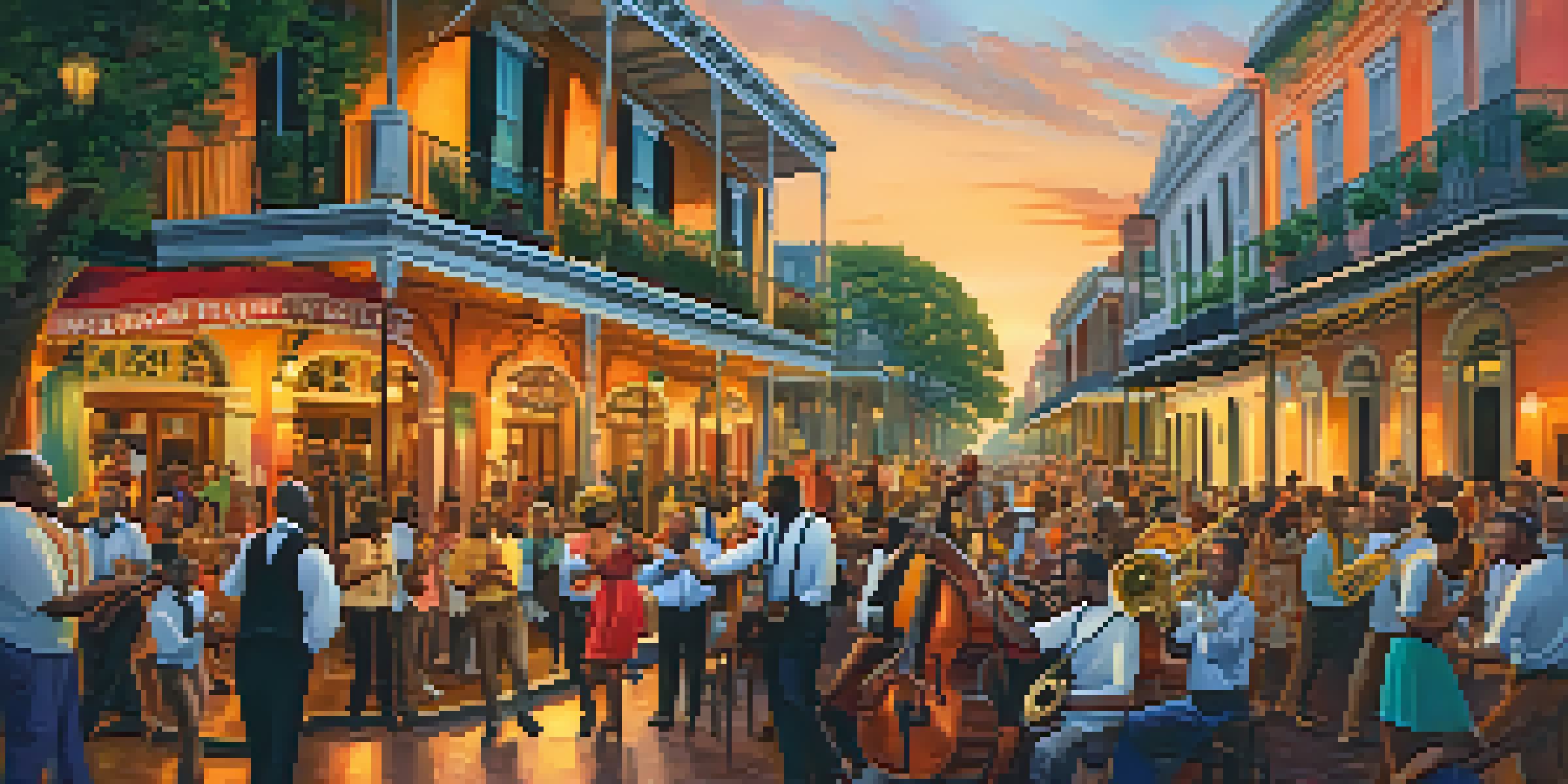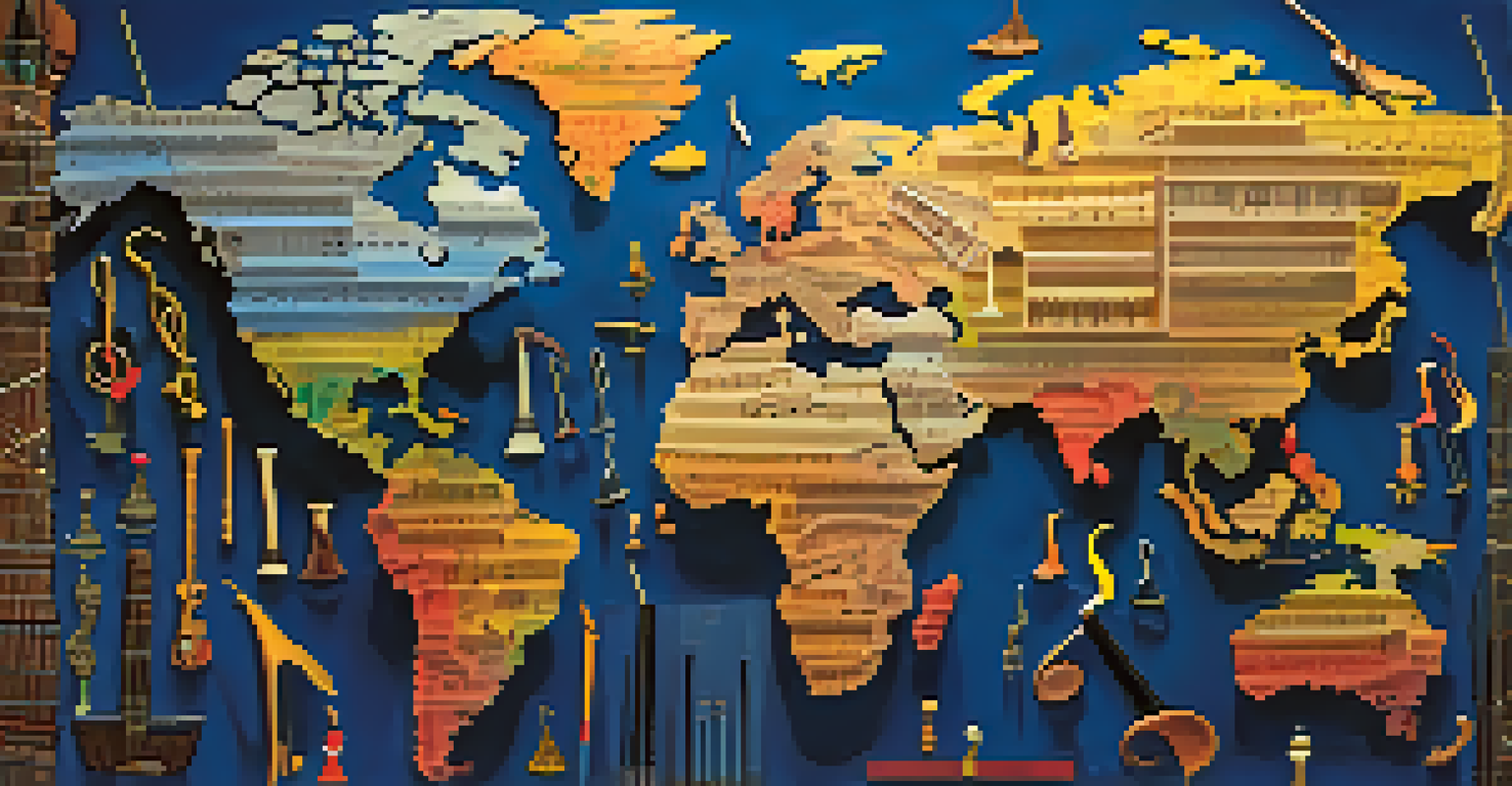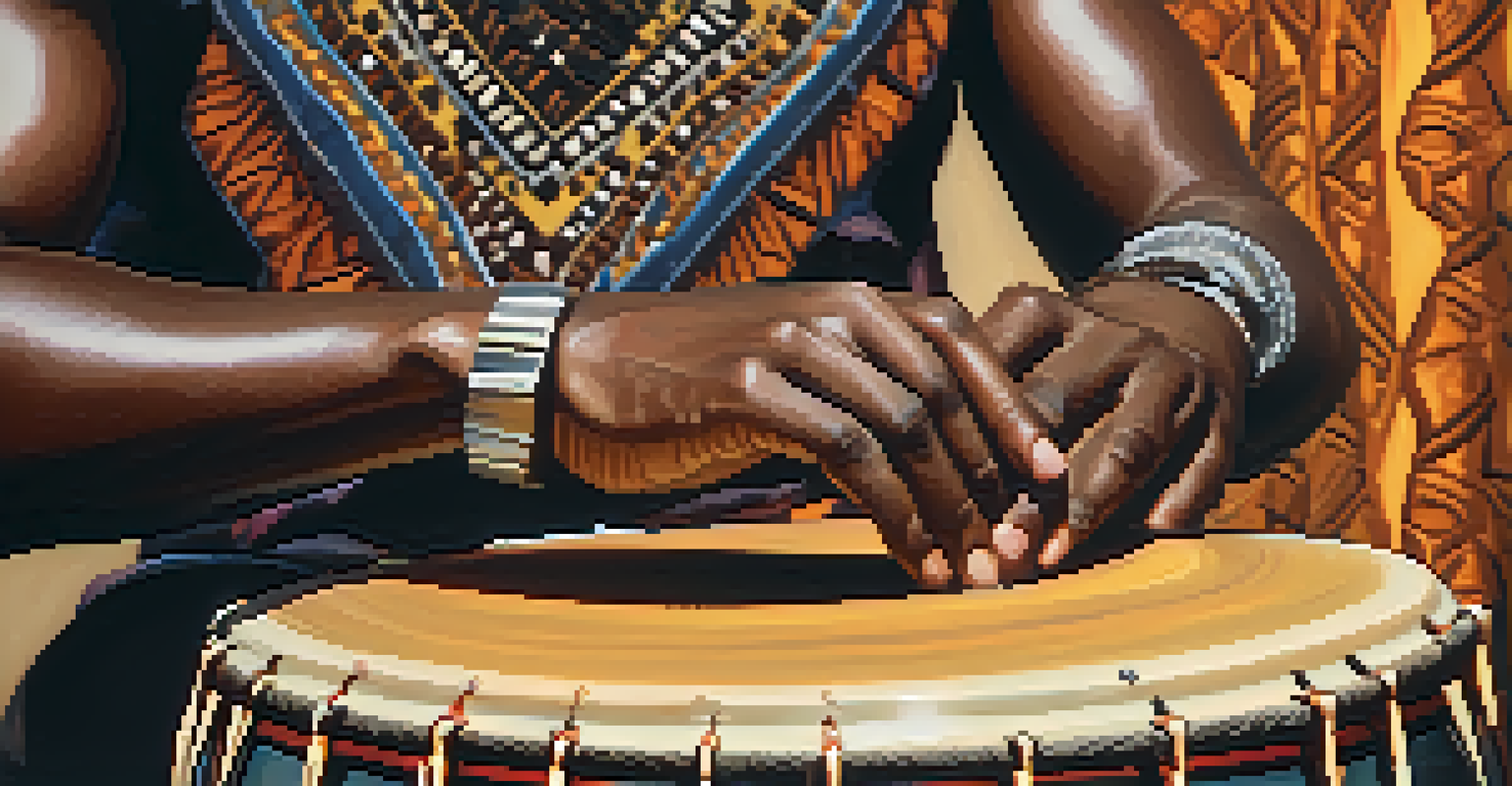Music and Migration: How Genres Evolve Through Cultural Exchange

Understanding Music as a Reflection of Cultural Exchange
Music is often seen as a universal language, but it's also a mirror reflecting the cultural exchanges that occur between communities. As people move, they carry their musical traditions with them, blending them with the sounds they encounter. This melding of influences creates new genres that resonate with diverse audiences.
Music is the universal language of mankind.
Take, for example, the migration of African people to the Americas, which significantly shaped music genres like jazz and blues. These styles emerged from a rich tapestry of African rhythms interwoven with European melodies, showcasing how cultural exchange fosters innovation in music. The sounds that arise from these interactions tell stories of struggle, resilience, and adaptation.
Ultimately, understanding music as a reflection of cultural exchange allows us to appreciate the dynamic nature of genres. Each note and lyric carries the weight of history, demonstrating how interconnected we all are through our shared love for music.
The Role of Migration in Shaping Musical Landscapes
Migration has been a significant force in shaping the musical landscapes of various regions. When communities relocate, they bring their musical heritage with them, leading to the evolution of local genres. This phenomenon is evident in cities like New Orleans, where the convergence of cultures has given rise to unique styles such as jazz and Cajun music.

Consider the impact of the Great Migration in the United States, where African Americans moved from the rural South to urban centers in the North. This movement led to the birth of rhythm and blues, which laid the groundwork for rock 'n' roll. Such transformations illustrate how migration serves as a catalyst for musical innovation and genre evolution.
Music Reflects Cultural Exchange
Music serves as a mirror of cultural exchange, showcasing how diverse influences create new genres and connect people.
As musicians draw inspiration from their diverse backgrounds, they create sounds that reflect their experiences and the influences of their new environments. This ongoing dialogue between cultures enriches the music we hear today, proving that genres are never static but continually evolving.
Cultural Exchange and the Fusion of Musical Genres
Cultural exchange often leads to the fusion of musical genres, resulting in fresh sounds that captivate listeners. This blending occurs when artists experiment with different styles, creating new sub-genres that defy traditional boundaries. For instance, the rise of reggaeton is a perfect example of Latin rhythms merging with hip-hop and dancehall influences.
The beauty of music is that it transcends the boundaries of culture and language.
Another compelling case is the collaboration between Western pop and traditional African music, which has produced vibrant genres like Afrobeats. These fusions not only celebrate diversity but also challenge the notion of cultural ownership, as artists borrow and innovate across genres. This collaboration creates a rich musical tapestry that reflects the complexities of our global society.
As genres continue to intermingle, they reflect the realities of a connected world, where cultural exchange plays a crucial role in shaping musical identity. The beauty of this evolution lies in its ability to unite people and foster understanding through shared artistic expression.
The Impact of Technology on Music Migration and Genre Evolution
In our digital age, technology has transformed the way music is created, shared, and experienced, further influencing genre evolution. With just a few clicks, artists can access a vast array of musical styles from around the globe, allowing for unprecedented collaboration and experimentation. This access has led to the rapid emergence of new genres that blend diverse influences.
Platforms like Spotify and SoundCloud have democratized music distribution, enabling musicians from different backgrounds to reach global audiences. This accessibility fosters cultural exchange, as listeners are introduced to new sounds and genres they may not have encountered otherwise. The result is a more interconnected musical landscape, where genres evolve at an astonishing pace.
Migration Shapes Musical Genres
The movement of communities significantly alters musical landscapes, leading to the birth of new styles like jazz and rhythm and blues.
As technology continues to evolve, it will undoubtedly shape the future of music in ways we can't yet imagine. The ongoing interaction between technology and cultural exchange will keep pushing the boundaries of musical genres, ensuring that they remain dynamic and reflective of our ever-changing world.
Case Studies: Genres Born from Migration and Exchange
Examining specific case studies can illuminate how migration and cultural exchange give rise to new music genres. One notable example is the development of tango, which originated in the working-class neighborhoods of Buenos Aires, Argentina. It evolved from the fusion of African, European, and indigenous musical traditions, showcasing the rich cultural tapestry of the region.
Another significant case is reggae, which emerged from Jamaica in the 1960s, influenced by ska, rocksteady, and African rhythms. As Jamaican immigrants moved to the UK, they brought reggae with them, leading to its evolution and the birth of sub-genres like dub and dancehall. This illustrates how the movement of people not only spreads music but also drives its transformation.
These examples underscore the importance of migration in the creation of new genres, highlighting how diverse influences can lead to the birth of something entirely unique. By studying these case studies, we gain a deeper understanding of the intricate relationship between music and cultural exchange.
The Future of Music: Globalization and Genre Innovation
As globalization continues to shape our world, the future of music is poised for even more innovation and genre evolution. The blending of cultural influences is becoming increasingly common, with artists drawing inspiration from a multitude of traditions. This interconnectedness opens up exciting possibilities for the creation of new sounds that reflect our global society.
We can already see this trend in genres like K-pop, which blends Western pop elements with traditional Korean music, creating a unique and captivating sound. The rise of global collaborations, where artists from different backgrounds come together to create music, is another testament to the exciting future of genre innovation. These collaborations break down barriers and foster a sense of unity through shared musical experiences.
Technology Fuels Genre Evolution
Digital platforms have transformed music creation and distribution, fostering global collaboration and the rapid emergence of new genres.
As we look ahead, it's clear that music will continue to evolve alongside cultural exchange and globalization. The future of music promises to be a vibrant tapestry of genres that celebrate diversity and reflect the rich complexities of our world.
Conclusion: Embracing Diversity in Music and Culture
In conclusion, the interplay of music and migration highlights the beauty of cultural exchange and its role in shaping genres. As we embrace the diversity of musical influences, we enrich our understanding of both music and the cultures from which it originates. Each genre carries a story, a history of connection that transcends borders.
By appreciating the evolution of music through migration, we acknowledge the shared experiences that unite us. This understanding fosters empathy and promotes collaboration among artists from different backgrounds, creating a vibrant musical landscape that reflects our interconnected world.

Ultimately, celebrating the diversity of music not only enriches our lives but also strengthens the bonds between cultures. As we continue to explore and embrace the sounds of different genres, we contribute to a more inclusive and harmonious global community.